After researching and a lot of trials-and-errors, I have come to a point that I can construct a spectrogram which I think it has element of rights and wrongs.
1. First, I read .wav file into a byte array and extract only the data part.
2. I convert the byte array into a double array which takes the average of right and left channels. I also notice that 1 sample of 1 channel consists of 2 bytes. So, 4 bytes into 1 double.
3. For a certain window size of power of 2, I apply FFT from here and get the amplitude in frequency domain. This is a vertical strip of the spectrogram image.
4. I do this repeatedly with the same window size and overlapping for the whole data and obtain the spectrogram.
The following is the code for read .wav into double array
import java.io.IOException;
import java.nio.ByteBuffer;
import java.nio.file.Files;
import java.nio.file.Path;
import java.nio.file.Paths;
import java.util.Arrays;
public class readWAV2Array {
private byte[] entireFileData;
//SR = sampling rate
public double getSR(){
ByteBuffer wrapped = ByteBuffer.wrap(Arrays.copyOfRange(entireFileData, 24, 28)); // big-endian by default
double SR = wrapped.order(java.nio.ByteOrder.LITTLE_ENDIAN).getInt();
return SR;
}
public readWAV2Array(String filepath, boolean print_info) throws IOException{
Path path = Paths.get(filepath);
this.entireFileData = Files.readAllBytes(path);
if (print_info){
//extract format
String format = new String(Arrays.copyOfRange(entireFileData, 8, 12), "UTF-8");
//extract number of channels
int noOfChannels = entireFileData[22];
String noOfChannels_str;
if (noOfChannels == 2)
noOfChannels_str = "2 (stereo)";
else if (noOfChannels == 1)
noOfChannels_str = "1 (mono)";
else
noOfChannels_str = noOfChannels + "(more than 2 channels)";
//extract sampling rate (SR)
int SR = (int) this.getSR();
//extract Bit Per Second (BPS/Bit depth)
int BPS = entireFileData[34];
System.out.println("---------------------------------------------------");
System.out.println("File path: " + filepath);
System.out.println("File format: " + format);
System.out.println("Number of channels: " + noOfChannels_str);
System.out.println("Sampling rate: " + SR);
System.out.println("Bit depth: " + BPS);
System.out.println("---------------------------------------------------");
}
}
public double[] getByteArray (){
byte[] data_raw = Arrays.copyOfRange(entireFileData, 44, entireFileData.length);
int totalLength = data_raw.length;
//declare double array for mono
int new_length = totalLength/4;
double[] data_mono = new double[new_length];
double left, right;
for (int i = 0; i < new_length; i++){
left = ((data_raw[i] & 0xff) << 8) | (data_raw[i+1] & 0xff);
right = ((data_raw[i+2] & 0xff) << 8) | (data_raw[i+3] & 0xff);
data_mono[i] = (left+right)/2.0;
}
return data_mono;
}
}
The following code is the main program to run
import java.awt.Color;
import java.awt.image.BufferedImage;
import java.io.File;
import java.io.IOException;
import java.util.Arrays;
import javax.imageio.ImageIO;
public class App {
public static Color getColor(double power) {
double H = power * 0.4; // Hue (note 0.4 = Green, see huge chart below)
double S = 1.0; // Saturation
double B = 1.0; // Brightness
return Color.getHSBColor((float)H, (float)S, (float)B);
}
public static void main(String[] args) {
// TODO Auto-generated method stub
String filepath = "audio_work/Sine_Sweep_Full_Spectrum_20_Hz_20_kHz_audiocheck.wav";
try {
//get raw double array containing .WAV data
readWAV2Array audioTest = new readWAV2Array(filepath, true);
double[] rawData = audioTest.getByteArray();
int length = rawData.length;
//initialize parameters for FFT
int WS = 2048; //WS = window size
int OF = 8; //OF = overlap factor
int windowStep = WS/OF;
//calculate FFT parameters
double SR = audioTest.getSR();
double time_resolution = WS/SR;
double frequency_resolution = SR/WS;
double highest_detectable_frequency = SR/2.0;
double lowest_detectable_frequency = 5.0*SR/WS;
System.out.println("time_resolution: " + time_resolution*1000 + " ms");
System.out.println("frequency_resolution: " + frequency_resolution + " Hz");
System.out.println("highest_detectable_frequency: " + highest_detectable_frequency + " Hz");
System.out.println("lowest_detectable_frequency: " + lowest_detectable_frequency + " Hz");
//initialize plotData array
int nX = (length-WS)/windowStep;
int nY = WS;
double[][] plotData = new double[nX][nY];
//apply FFT and find MAX and MIN amplitudes
double maxAmp = Double.MIN_VALUE;
double minAmp = Double.MAX_VALUE;
double amp_square;
double[] inputImag = new double[length];
for (int i = 0; i < nX; i++){
Arrays.fill(inputImag, 0.0);
double[] WS_array = FFT.fft(Arrays.copyOfRange(rawData, i*windowStep, i*windowStep+WS), inputImag, true);
for (int j = 0; j < nY; j++){
amp_square = (WS_array[2*j]*WS_array[2*j]) + (WS_array[2*j+1]*WS_array[2*j+1]);
if (amp_square == 0.0){
plotData[i][j] = amp_square;
}
else{
plotData[i][j] = 10 * Math.log10(amp_square);
}
//find MAX and MIN amplitude
if (plotData[i][j] > maxAmp)
maxAmp = plotData[i][j];
else if (plotData[i][j] < minAmp)
minAmp = plotData[i][j];
}
}
System.out.println("---------------------------------------------------");
System.out.println("Maximum amplitude: " + maxAmp);
System.out.println("Minimum amplitude: " + minAmp);
System.out.println("---------------------------------------------------");
//Normalization
double diff = maxAmp - minAmp;
for (int i = 0; i < nX; i++){
for (int j = 0; j < nY; j++){
plotData[i][j] = (plotData[i][j]-minAmp)/diff;
}
}
//plot image
BufferedImage theImage = new BufferedImage(nX, nY, BufferedImage.TYPE_INT_RGB);
double ratio;
for(int x = 0; x<nX; x++){
for(int y = 0; y<nY; y++){
ratio = plotData[x][y];
//theImage.setRGB(x, y, new Color(red, green, 0).getRGB());
Color newColor = getColor(1.0-ratio);
theImage.setRGB(x, y, newColor.getRGB());
}
}
File outputfile = new File("saved.png");
ImageIO.write(theImage, "png", outputfile);
} catch (IOException e) {
// TODO Auto-generated catch block
e.printStackTrace();
}
}
}
However, the image I obtain from .wav playing sweeping sound from 20-20kHz is like this:
The color show the intensity of sound red(High)-->green(Low)
By right, it should look something like the picture below:
I would really appreciate if I can get any correct/improvement/suggest on my project. Thank you in advance for commenting on my question.




